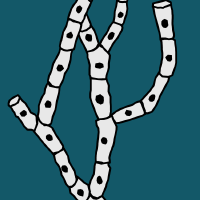Topic Menu
► Topic MenuTopic Editors

2. National Institute of Fundamental Studies (NIFS), Kandy, Sri Lanka



Fungal Diversity
Topic Information
Dear Colleagues,
Fungi are a group of organisms with a high level of diversity. Fungi are also well known as the second most speciose group after the insects; hence, it is challenging to complete the global fungal diversity estimates, as compared to other organisms. In various ecosystems, fungi are found as pathogens, decomposers, and mutualists, and are of significant ecological value as they impact nearly every component of the ecosystem services, while in most cases, the role of an individual fungus in nature is still unknown. Despite the fungal diversity that science has revealed and their innumerable roles in ecology, health, and industry, much about these unique organisms remains a mystery. This topic intends to cover all fungi related subjects viz. Taxonomy, phylogeny, pathology, toxicology, ecology, and biotechnology. Both original and review articles are welcome.
Prof. Dr. Samantha C. Karunarathna
Dr. Patcharee Pripdeevech
Prof. Dr. Sumedha Madawala
Dr. Alvin M.C. Tang
Dr. Benjarong Karbowy-Thongbai
Dr. Asha Janadaree Dissanayake
Dr. Arun Kumar Dutta
Topic Editors
Keywords
- ascomycota
- basidiomycota
- biodegradation
- biocontrol agents
- biotechnology
- fungal taxonomy
- fungal phylogeny
- next generation sequencing
- fungal toxins
- fungal pathogens
- fungal ecology
- mushrooms
Participating Journals
| Journal Name | Impact Factor | CiteScore | Launched Year | First Decision (median) | APC |
|---|---|---|---|---|---|

Diversity
|
2.1 | 3.4 | 2009 | 15.4 Days | CHF 2100 |

Journal of Fungi
|
4.2 | 6.7 | 2015 | 17.1 Days | CHF 2600 |

Life
|
3.2 | 4.3 | 2011 | 18 Days | CHF 2600 |

Microorganisms
|
4.1 | 7.4 | 2013 | 13.4 Days | CHF 2700 |

Pathogens
|
3.3 | 6.4 | 2012 | 16.3 Days | CHF 2200 |

MDPI Topics is cooperating with Preprints.org and has built a direct connection between MDPI journals and Preprints.org. Authors are encouraged to enjoy the benefits by posting a preprint at Preprints.org prior to publication:
- Immediately share your ideas ahead of publication and establish your research priority;
- Protect your idea from being stolen with this time-stamped preprint article;
- Enhance the exposure and impact of your research;
- Receive feedback from your peers in advance;
- Have it indexed in Web of Science (Preprint Citation Index), Google Scholar, Crossref, SHARE, PrePubMed, Scilit and Europe PMC.

